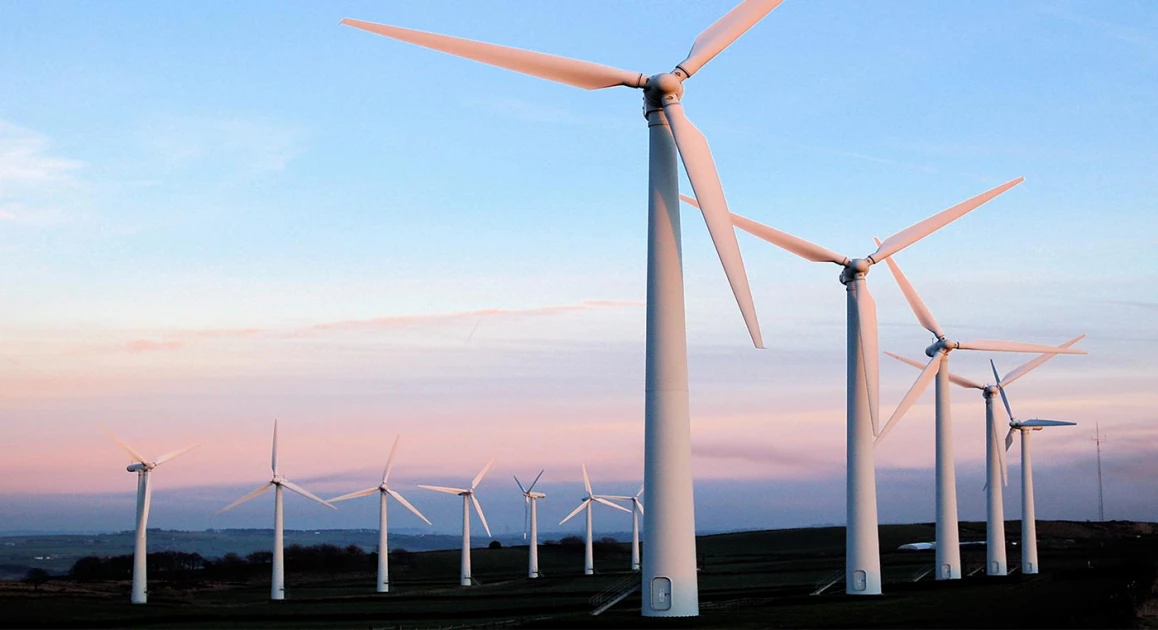OPINION: The future of alternative fuels in industries - renewable and new energy


Audio By Carbonatix
As the world continues to grapple with climate change, environmental degradation, pollution and the depletion of fossil fuels, the move towards alternative fuels is becoming more urgent and critical as the world looks to shift towards fuels that are crucial to creating cleaner and more sustainable industries and economies.
Alternative fuels are energy sources used instead of
traditional fossil fuels like coal, oil, and natural gas. They contribute
minimally to pollution and are often generated by sources that are renewable.
The main types of alternative fuels include: Biofuels, these
are fuels made from plants, algae or animal waste; Electricity, specifically
generated from solar, wind, or hydro power; Hydrogen, particularly green
hydrogen made using renewable electricity; Ethanol and biodiesel from crops
like sugarcane, maize and soy and finally; natural gas alternatives like
biogas.
The term renewable energy comes from natural sources that
replenish themselves such as solar power (from sunlight), wind energy,
hydropower (from rivers and dams), geothermal energy (from the Earth's heat),
and biomass energy (from organic materials).
The term new energy refers to emerging technologies that are
not yet widely used but hold promise for the future. These include: Green
hydrogen that is produced without carbon emissions; Ocean energy from waves and
tides; Advanced battery storage and; Fusion energy which is still under
research and development.
Fusion energy involves a process of making power from the
same process that powers the sun, a process that involves the fusion of
different atoms.
The shift to alternative fuels is especially important in
fighting climate change as burning fossil fuels is the biggest source of
greenhouse gases, which cause global warming. Replacing this with clean energy
sources will help reduce emissions and slow down climate change. Air pollution
from fuel burning is also a health risk, often causing diseases and leading to
millions of deaths each year.
Countries that rely on imported oil and gas are vulnerable
to price shocks and supply disruptions and using local renewable energy makes
countries more energy-independent and secure.
The renewable energy sector is also creating jobs in
installation, manufacturing, and maintenance and according to the International
Renewable Energy Agency (IRENA), the sector employed over 13 million people
globally in 2022 with this number increasing to over 16 million in 2023 an 18%
increase.
Finally, alternative energies are also helping in the
conservation of natural resources. Fossil fuels are limited and take millions
of years to form while renewable on the other hand never run out and are more
sustainable for the future.
Alternative energy use is growing throughout the world.
Countries like Germany, Denmark, and Spain are global leaders in wind and solar
energy with Germany aiming to get 80% of its electricity from renewable by
2030. In Denmark, wind power already supplies over 50% of the country’s
electricity.
China is currently the world’s largest producer of solar
panels and wind turbines and is investing heavily in electric vehicles and
green hydrogen projects to reduce their dependence on coal.
The United States of America has developed strong bio-fuel
programs especially in ethanol production from corn while India runs the
world’s largest solar energy program, aiming to install 500 gigawatts of
renewable capacity by 2030. India also has large-scale solar parks and supports
off-grid solar for rural homes.
Africa has great potential to adopt alternative energies to
power its future development and growth. It has abundant natural resources that
make it ideal for renewable energy with over 300 days of sunshine in many
regions, strong wind corridors, rivers for hydro power, and large amounts of
biomass.
Africa will set up Sustainable Aviation fuel production
infrastructure centers, to support reduction of carbon by 60 to 80 per cent
into the environment. The current use of SAF with 50-50 blending with normal
jet fuel on current aircraft infrastructure has been tested successfully by
Virgin, Ryan Air, Ethiopian and Kenya Airways among other airlines. Global aviation growth will see 20000
aircrafts increase to over 40000 globally in the next few years.
Projects like M-KOPA in Kenya and d-light among other solar
projects, in East Africa provide solar
lighting and phone charging for homes without access to electricity, improving
health and education while reducing dependence on kerosene. This is
transformation of economies and improving impact on communities and lives.
Ethiopia’s Grand Renaissance Dam and Kenya’s Seven Forks
Dams supply a large part of the countries’ electricity needs from water,
offering a clean and reliable energy source.
Countries like Namibia, South Africa, and Morocco are
exploring green hydrogen production using solar and wind power, an example
being Namibia’s Hyphen Hydrogen Project which is expected to supply clean fuel
and create thousands of jobs.
In Nigeria and Ghana, companies are turning agricultural and
household waste into energy through biogas systems, reducing waste, lowering
emissions, and providing an affordable energy option for rural communities.
While progress is being made, several challenges remain
including the high costs of investing in new technology and infrastructure,
lack of finances for in developing regions, limited or weak energy policies and
regulations, inadequate technical skills and lack of awareness, and inadequate
electricity grids to support variable renewable energy Governments, private
investors, and development partners need to work together to overcome these
barriers.
Training regional workers, creating better, enabling and
supporting legislations, and using public-private partnerships can help
mitigate some of these challenges.
The world is moving toward a future where alternative fuels
will power homes, vehicles, factories, shipping and planes and transform the
private and public partnership investments.
Renewable and new energy technologies and investments
provide a chance to build cleaner, fairer, and more resilient economies
globally.
For Africa, the opportunity is even greater and leapfrogging
old energy systems and creating green jobs can help spur the continent’s
economic development and growth.
Alternative fuels, driven by renewable and new energy technologies, are
the foundation for a better future.
Chris Diaz
Conservationist and
Chairman
Adili Group


Leave a Comment